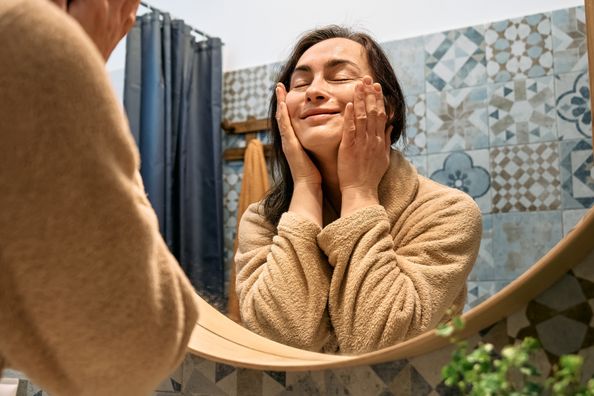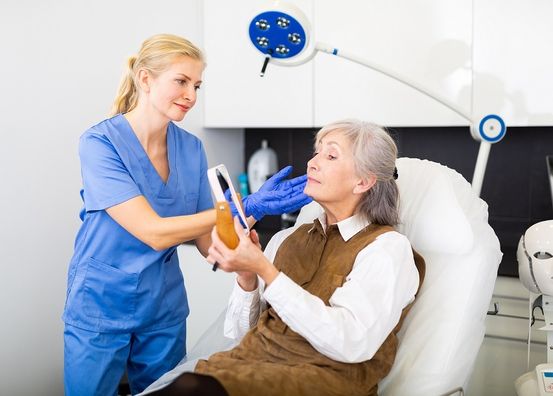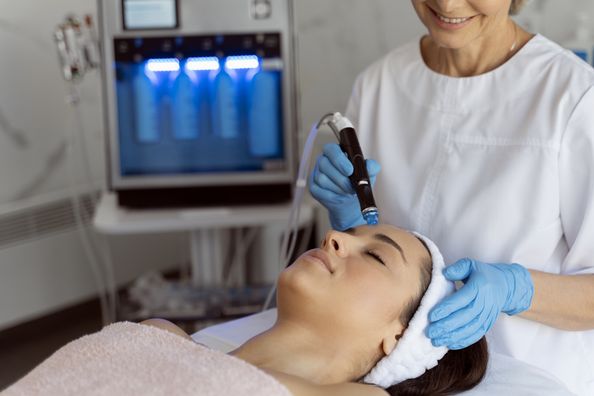I frequently see patients interested in changing the appearance of their nose. They may be unhappy with the size, shape or angle of their nose. They may have a bump or indentation that bothers them, or they do not like the way their nasal tip looks. It may be the nose that they were born with or the appearance may be the result of an injury. Whatever the reason, nasal appearance can ultimately affect the way we view and feel about ourselves.
Rhinoplasty, commonly known as a “nose job,” is a surgical procedure performed to reshape the nose. It is important to seek out an experienced, board certified surgeon who will not only be focused on the aesthetic result, but who will also be focused on ensuring that the nasal airway is not compromised during the reshaping process.
As part of your consultation, I use computer imaging software that allows me to simulate the potential surgical changes. It is a great way for you to see how your nasal appearance may be altered with surgery; it allows me to have a visual understanding of your desired goal for change while providing you with realistic expectations for change. I feel it’s of utmost importance that you have clear and realistic expectations. No surgeon can give you someone else’s nose; he/she can only alter your nose. My personal philosophy is to provide a natural appearing nose which is harmonious with one’s face. Although much time is spent addressing specific changes of the nose, I also take into account how other facial structures may affect the appearance of the nose, such as a short chin. The imaging software is very helpful in identifying contributing factors such as this, and seeing differences in chin position relative to the reshaped nose.
During your rhinoplasty surgery, I will make incisions to access the bones and cartilage that support the nose. The incisions are primarily inside the nose where they are invisible after the surgery, although there is one small external incision across the skin between the nostrils. Depending on the goal, some bone and cartilage may be removed, and tissue may be added.
I have a background in Otolaryngology and I pay particularly close attention to the nasal airway throughout the procedure. Once surgery is completed, a small triangular cast is taped to the bridge of the nose to support the new shape for the first week, and there may be splints inside the nose.
One week after your surgery, the cast, splints and bandaging around your nose is removed. Your face and eyes may be bruised and feel puffy and the nose will be bruised and swollen for several days. It takes approximately 10 – 14 days for most of the swelling and bruising to improve. Pain medication is sometimes prescribed during this time. I recommended keeping your head elevated and still for the first few days following surgery and your activities may also be limited for a few weeks. Most patients require about 1 week off from work.
A common question that I receive is “at what age can rhinoplasty be performed?” Surgery should only be performed on a fully grown nose. Complete nasal development has usually occurred by age 15 or 16 in females and by age 17 or 18 in males. Complications may result if surgery is done before this time. I typically wait until females are 16 years of age and males are 18 years of age before proceeding with this procedure.
As with any surgery, there are also some risks that your surgeon should review with you so that you can make an informed decision before you decide to proceed. It is also very important that you feel comfortable with the surgeon performing your procedure. Although temporary swelling and bruising around the eyes and nose is normal and expected after rhinoplasty, other problems may occur and are discussed during your consultation. Before moving forward with surgery, I will walk you through the surgery process and you will learn about the risks and benefits of rhinoplasty. It is my goal to ensure that you feel comfortable and confident and that we have an effective patient/physician partnership.
Making the decision for rhinoplasty should be thoughtful and well-informed. To schedule a consultation for rhinoplasty, please call our office at 630−545−7840.
Health Topics:








